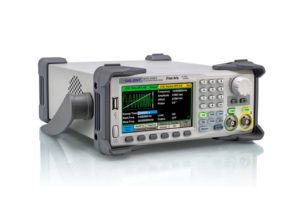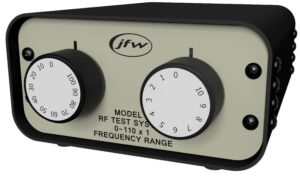I want to replace my dead HP 3335A with a new Siglent SDG 2042X. After all, the latter is 40 years newer, 20 pounds lighter, and maybe 1/8 the volume. It is also silent as a church mouse (the HP’s fans produced an obnoxious roar while keeping its ECL logic from melting). The HP cost about $14,000 in 1980, and the Siglent sells for under $500 new today. We have come a long way in the last 40 years!
The executive summary is that it is more than capable of replacing the 3335A, from a stability point of view. However, it lacks HP’s wonderful built-in step attenuator that allowed one to set an output signal level like -84.1 dBm and expect it to be spot on. The Siglent has no dBm feature, only volts or millivolts. (Correction, it can be set to dBm from -50 to +23 dBm). I set mine to an output level of 632.4 mVpp, which is the equivalent of 0 dBm, then adjust it using an external attenuator box like a JFW Industries 50BR-001.
The Siglent allows sub-hertz frequency entry. Using the keypad you can enter 1.23456789 MHz, you will get an output signal that is 1.234 567 890 MHz and will see that final digit bouncing around by no more than 1 count up or down. If you use the knob, you can expect to change the output in steps of 1 hertz (or 10/100/1000/10000, etc). Watch out if you enter a frequency using the keypad that has a sub-hertz resolution, then use the knob to adjust it later. You will no longer see those sub-hertz digits on the display, but they are still there. Best to enter a frequency to the nearest hertz using the keypad before using the knob. (Edit – I verified that you can enter a frequency, using the keyboard, with 1 millihertz resolution).
The spec is a tad misleading as it claims to be a 40 MHz signal source. This is true for sine wave only. All other functions have significantly lower upper limits (25 MHz for square wave, 1 MHz for a ramp).










